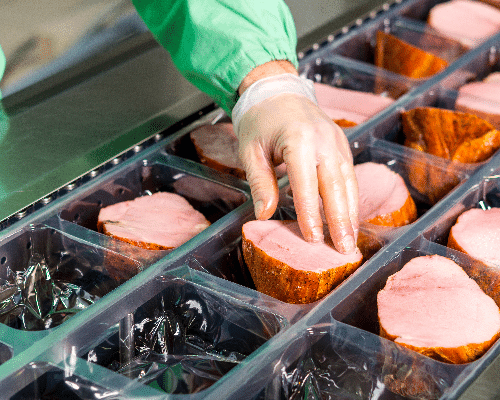
The Complete Guide to Air Compressor Sizing
May 15, 2024
Choosing the Right Air Compressors for Electric Car Battery Manufacturing
May 29, 2024The Bond Between Air Compressors and Renewable Energy
Kaishan USA | May 22, 2024 | Uncategorized
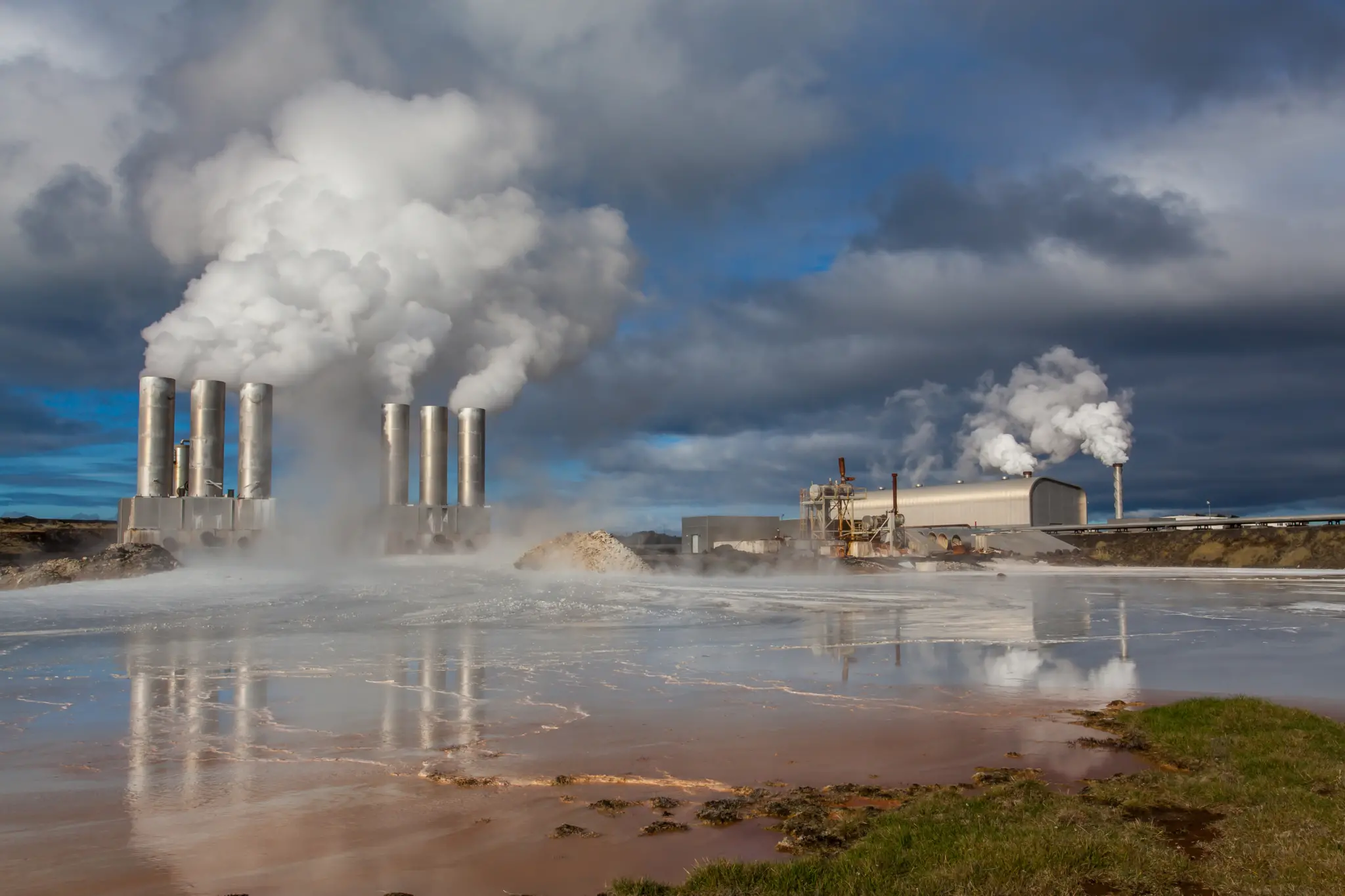
Low-temperature heat sources like geothermal plants are prime candidates for Organic Rankine Cycle systems, which adapt rotary screw air compressor technology to recover energy.
Rotary screw air compressor technology is used in a wide range of applications outside its traditional uses in providing compressed air for commercial and industrial facilities.
It plays an important role in a wide range of energy-conservation or renewable-energy efforts in processes using hot water or steam. Think power generation, especially, and even commercial laundries.
The technology is the same but modified slightly to support Organic Rankine Cycle (“ORC”) systems, gas expansion, steam expansion and heat recovery.
We’ll start with what ORCs are and what they do.
Organic Rankine Cycle
ORC systems use organic fluids like refrigerants or hydrocarbons to extract energy from low-temperature heat sources (as low as 176°F/ 80°C). They are ideal for renewable energy applications like solar, wind and especially geothermal.
They work a lot like an air conditioner or heat pump, using a refrigerant to capture heat. The fluid is pumped through a heat exchanger to a boiler, evaporated and passed through an expansion device to bring it to a cooler temperature and recover the heat.
The rotor technology used in Kaishans screw compressors is one of the leading expansion techniques. However, we’ve deployed it in the opposite direction from a traditional screw compressor; as the screws rotate, the organic fluid expands, driving a generator to produce electricity.
One of our sister companies, Open Mountain Energy, has developed several ORC plants using Kaishan’s rotor technology. The largest are Whitegrass No. 1, a 4 MW plant near Yerington, NV and the 14 MW Star Peak Geothermal plant in Imlay, Nevada.
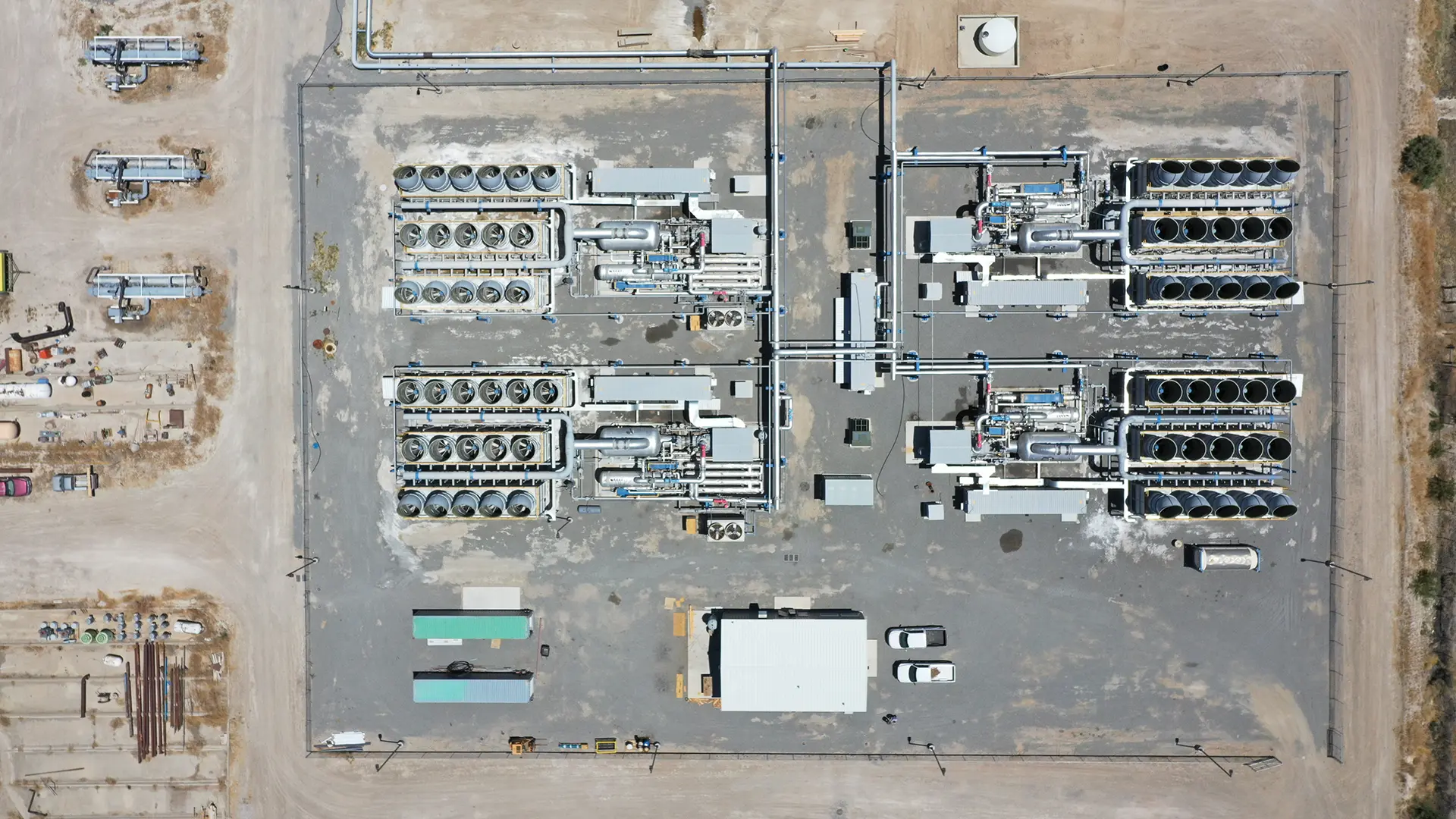
Whitegrass No. 1 is a 4 MW binary plant near Yerington, NV. It was Open Mountain Energy’s first project to reach commercial operation. Open Mountain Energy is a subsidiary of the Kaishan Group.
The goal is for our expander equipment and energy recovery plants to produce enough power that they will offset the energy consumed by the compressors we manufacture.
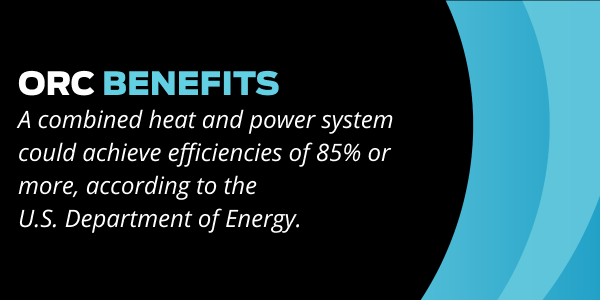
The U.S. Department of Energy says that an ORC system could enable a combined heat and power system to achieve a total system efficiency of 85% or more. The study estimates potential financial benefits from ORC at $1.4 billion in California alone.
However, you don’t have to have a combined heat and power system to take advantage of this technology. The typical industrial plant can also recover waste heat from compressed air systems.
Steam expanders are a prime example. We’ll discuss them next.
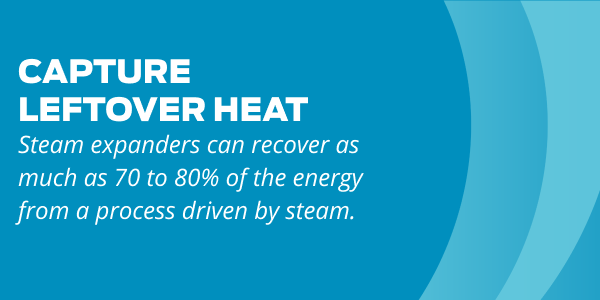
Steam Expanders
Steam expanders capture leftover heat from a process driven by steam, recovering as much as 70 to 80% of the energy. Most companies waste this energy.
Much like the ORC system described above, a steam expander works in the opposite direction from a traditional screw compressor. As the screws rotate, the steam expands, driving a generator to produce electricity or otherwise produce rotational energy (e.g., to run a pump).
We’ve had instances where a customer needed steam for a few hours in a shift. But, of course, they couldn’t turn off their boiler, so, they created steam they didn’t need for several hours a day. With a steam expander, they at least had the opportunity to recover some of that energy.
More Efficient, Less Expensive Than Turbines
Steam expanders aren’t for everyone. A steam expander using rotary screw technology fills a “sweet spot”—it’s more efficient and less expensive than a turbine would be for a specific application. A typical example is a process on the scale of a chemical plant.
The application must be large enough to merit the investment but not so large that a turbine would be a better alternative. That’s the niche—applications that are large enough for steam expanders to be more efficient but less expensive than turbines.
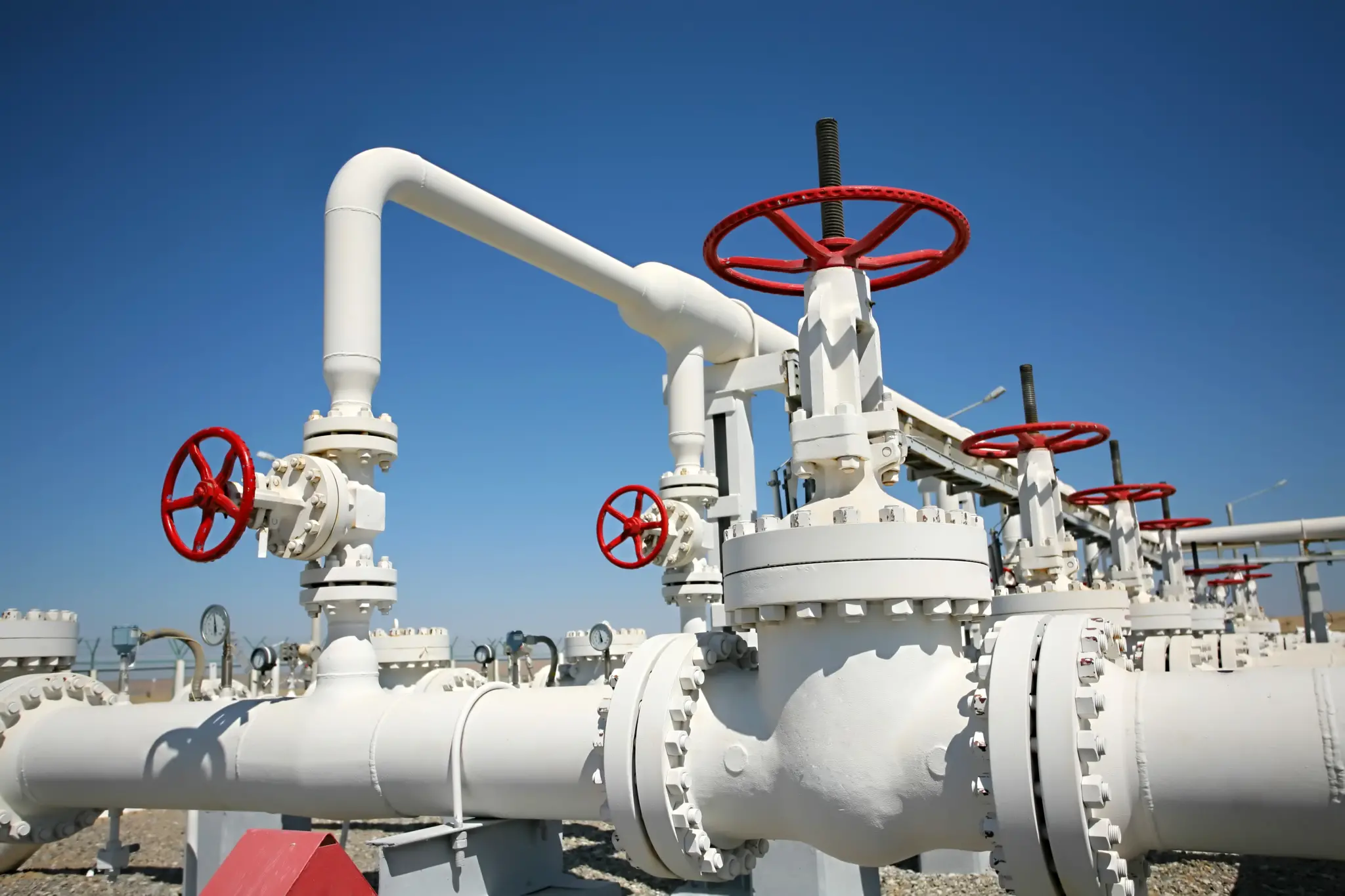
Natural gas expanders use the same technology as steam expanders to capture the energy released when the gas pressure is reduced after transport.
A similar application is a natural gas expander, in which you capture the energy used to compress the gas and transport it in a pipeline at high pressure.
The same principle—extracting energy from a heat source—also applies in heat recovery systems connected to our rotary screw air compressors. We’ll discuss that next.
Heat Recovery
It’s possible to save significant amounts of energy by recovering the heat removed from a compressed air system. Heat recovery is especially attractive in areas requiring space heating in the winter. That usually means northern climates.
In the summer, a damper directs the air toward an outside vent. In the winter, the air goes toward space heating or preheating other operations.
Removing that excess heat delivers two benefits. First, it gets the hot air out of the compressor room, reducing energy consumption and preventing damage to the compressor and its components. And second, you can use it in a variety of ways in other parts of your enterprise. You can’t really get “hot” water out of it, but you can get warm water for laundries or pre-heated water for a boiler.
Remember, that’s a substantial benefit currently being wasted in most cases. At least 70% to 80% of the energy used to compress the air becomes waste heat. And Compressed Air Best Practices says you can recover 90% of that heat loss, while Manufacturing.net places the figure as high as 96%.
For more information on configuring your compressed air system to maximize heat recovery, see our blog post, “Compressor Room Design.”
In addition to these programs directly supporting energy conservation, air compressors play an important role in renewable energy efforts, including solar and wind energy projects.
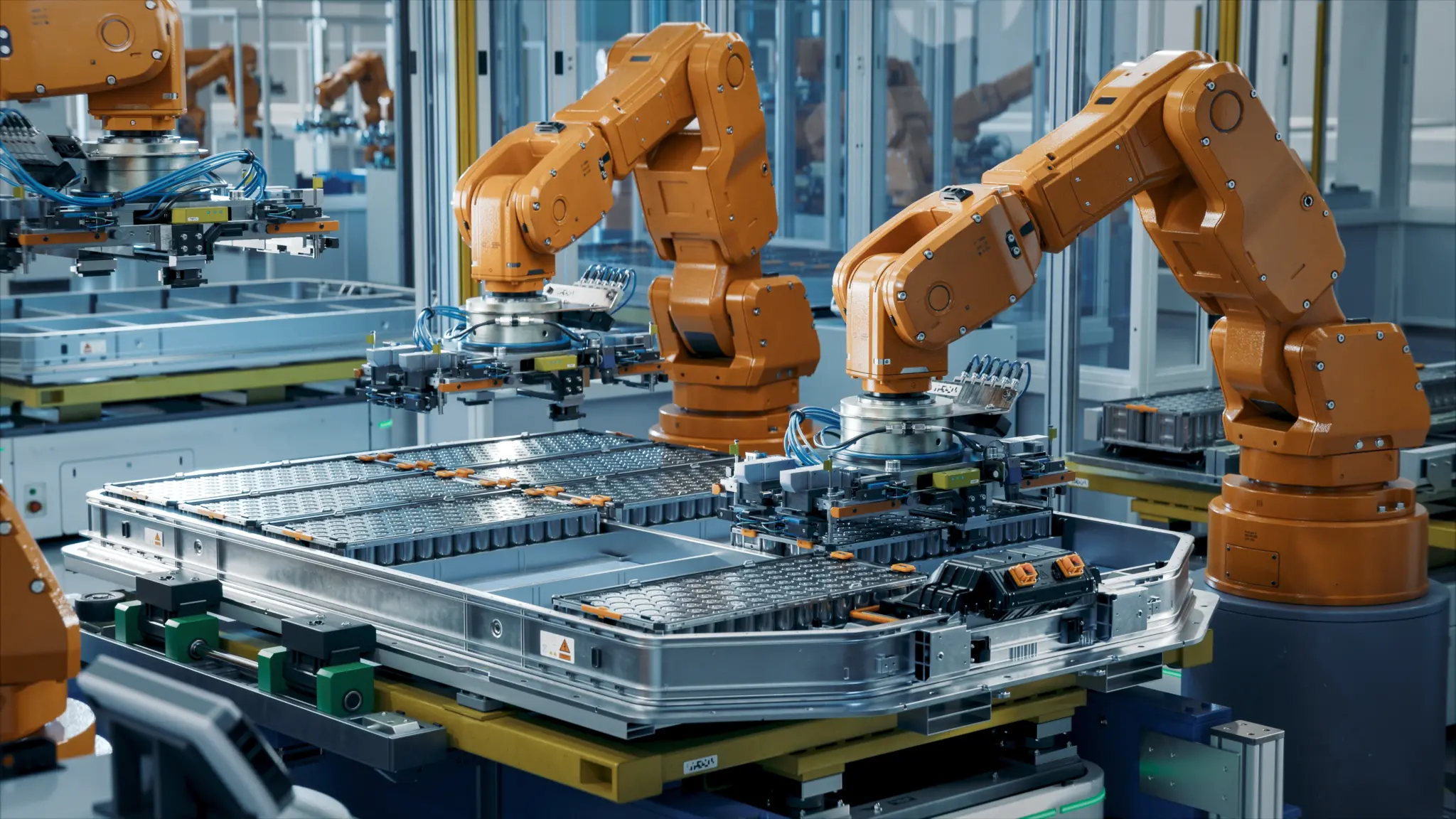
Air compressors drive the pneumatics used in producing cutting-edge EV batteries.
Manufacturing Renewable Energy Equipment
Virtually all solar panel and wind turbine manufacturing companies use air compressors in their facilities.
Solar panel manufacturers deploy compressed air to power many of the tools they use to create and fabricate the silicon wafers at the heart of solar energy production. Air compressors also supply air to the pneumatic equipment used throughout the automated solar panel production process, especially fastening, connecting and testing.
Wind turbine manufacturers employ vacuum and compressed air techniques in the resin infusion technology that molds the composite blades used in most wind applications today. Compressed air also supports the non-destructive testing processes used in turbine manufacture.
In both solar and wind industries, air compressors help keep the manufacturing process clean and free from dust, debris and contaminants. Compressed air also supports the application of paints and coatings.
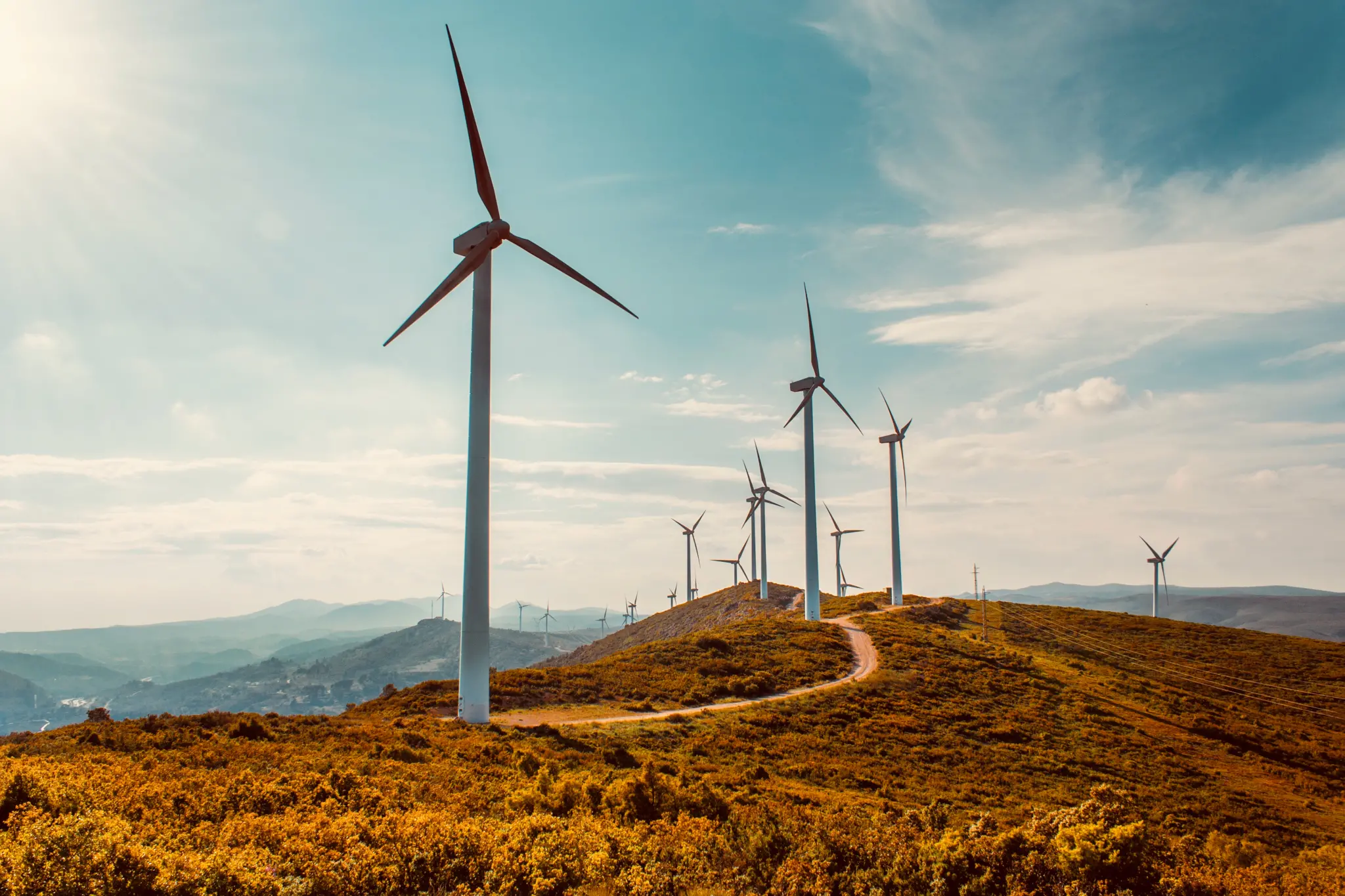
Air compressors power pneumatic controls and help adjust blade position in wind energy applications.
Support for Wind and Solar Operations
Air compressors support wind and solar energy projects by supplying air to pneumatic controls that adjust blade position on wind turbines or help position mirrors or lenses to focus sunlight in a concentrated solar plant. Wind and solar operators also use both technologies in cleaning.
It works the other way as well, with solar systems driving compressors, especially in remote or “off-the-grid” locations.
Air compressors even figure prominently in less high-profile applications such as biogas production, carbon capture and storage and electric car battery production.
Local Help
If you’re considering renewable energy applications for your facility, you may want to consult with a professional who can help you optimize your operation to apply steam expanders, heat recovery or other approaches for energy capture and recovery. Find one of our independent distributors in your area to get the on-site help and consultation you need.
Key Takeaways
-
- The core technology that drives a rotary screw air compressor is used in important energy-conservation or renewable-energy efforts.
- Organic Rankine Cycle systems extract energy from low-temperature heat sources like solar, wind and geothermal.
- Steam expanders recover as much as 70 to 80% of the leftover heat in steam-driven processes.
- Heat recovery systems can help you save significant amounts of energy by recovering the heat removed from a compressed air system.
- Air compressors play a vital role in broader renewable energy efforts, including solar and wind projects and energy recovery.
Let Us Help
Kaishan rotary screw air compressors strongly support renewable energy systems in virtually all commercial and industrial uses. If you need help selecting the right rotary screw air compressor-based heat-recovery technology for your operation, get in touch with the experts at Kaishan. Contact us today.
Air compressors play an important role in renewable energy efforts, including solar and wind energy projects, energy recovery and even more cutting-edge technologies.

